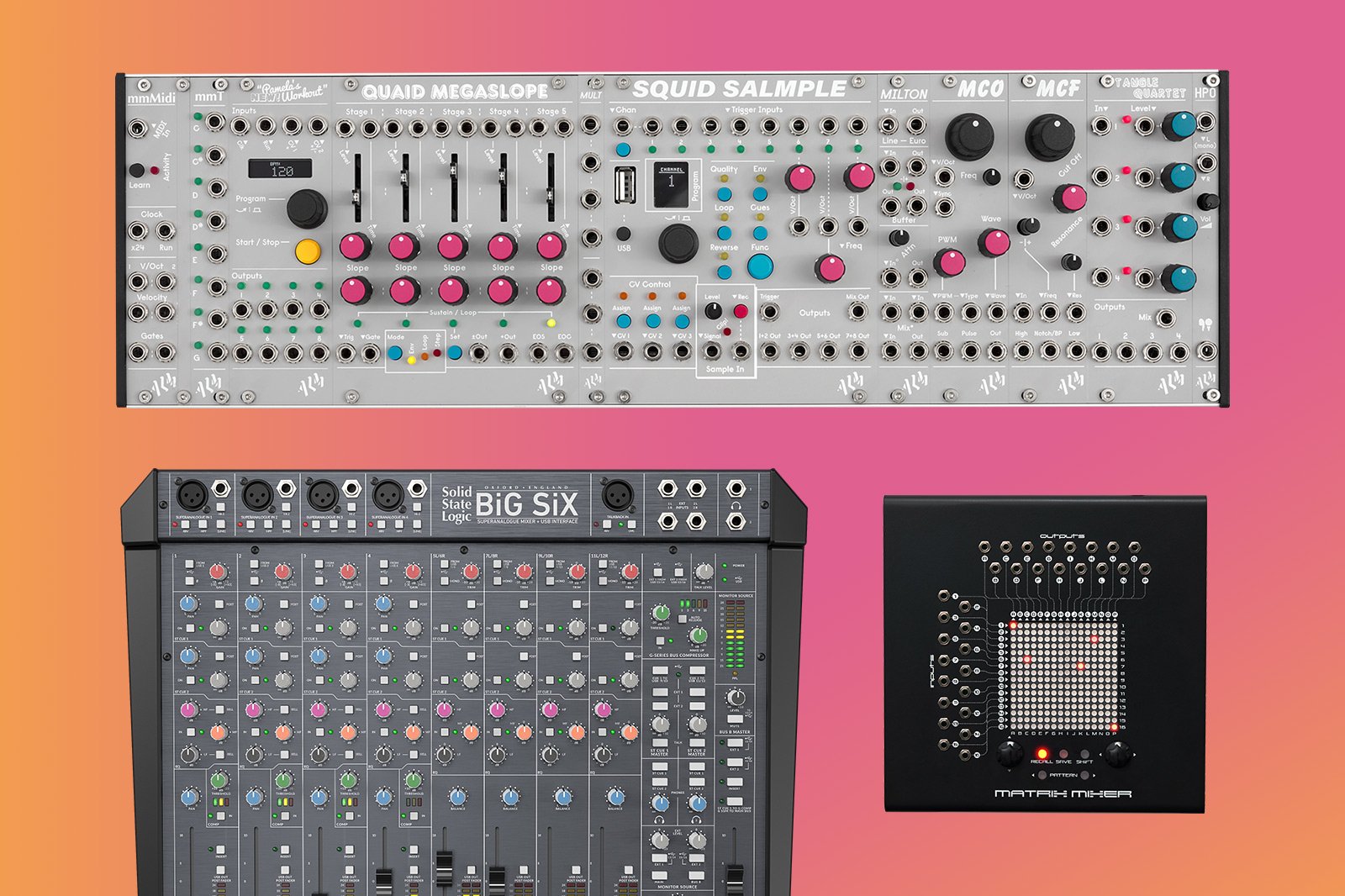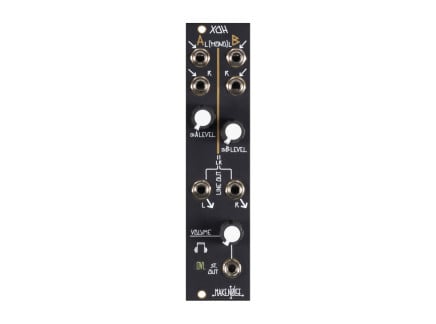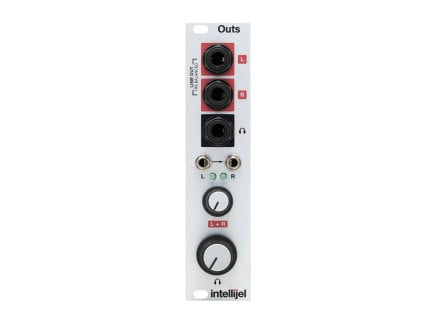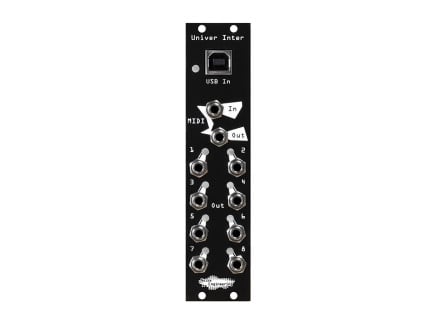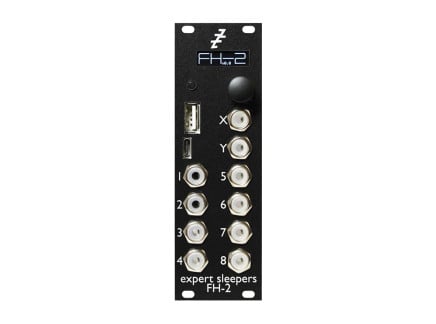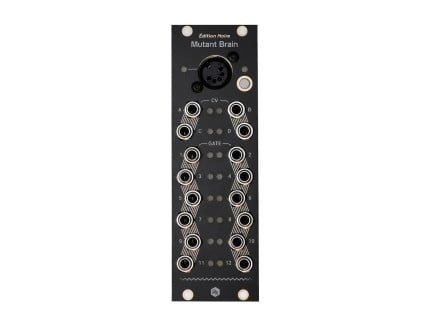Eurorack modular synthesizers are not like other gear. It has little interest in fitting in with your setup or making your life easier. If your creativity has been largely focused through an inch square of mouse movement, then modular will be a challenge in the best possible way. Eurorack is a disruptor of safe and cozy workflows. It doesn't care for your platform, your emulations, presets, or attempts to load a session. It's a persistent incursion into your studio environment that demands all your time and engages all your senses.
If you want an easy life, stick to plugins. But if you want to adventure into sound discovery, explore chaos and unveil moments of unique musical happenings, then modular could be for you. But how can you make it fit into your studio?
Working with modular will make your life harder, but in my view, the rewards will greatly outweigh the inconvenience. But it does depend on what you are trying to do. It's in its nature to evolve, change and be different, always looking forward to the next thing rather than looking back to what it's already achieved. It's challenging to save, hazardous to recall and usually impossible to undo. And that's what makes it difficult for a music production environment that relies on loading up and revisiting complex projects. Because unless you leave it patched exactly as it was, you are unlikely to refind the thing you were working on.
So, it's much better to use software emulations then, right? For some people, yes, but I would suggest that misses out on the extraordinarily creative things Eurorack hardware can bring to the table. You have this mix of interactions between your intentions and the machine in front of you. Sound and visualization can easily be replicated on a computer, but the feeling of your fingers on patch cables, the plugging into sockets, the thought required to figure out your routing, to test connections and stumble into outcomes, can not. Computers pull you into efficient ways of working; modular slows you down into a much-needed sense of musical mindfulness. And it's fun too. When was the last time a plugin made you giggle? My Eurorack is hilarious.
However, like any instrument, with a little bit of imagination, Eurorack can find its place in a studio. It can absolutely work with your DAW and connect to your system. But first, let's deal with the mystical subject of recall.
Eurorack Presets?
The only true way to save a Eurorack patch is to never change it. Just leave it patched in, all set up and don't touch any dials. That way, you can return to it on another day, and it will make the exact same sound it was when you made the patch. However, I don't tend to find this to be reliable. I don’t know about you, but when I come back to the same patch the next day, it never seems to sound the same.
So, without resorting to locking down your synth, are there ways to give some resemblance of recall? Perhaps. Some digital modules have the ability to save their settings or may have a number of slots for sound configurations. For instance, the Winter Plankton ZAPS drum synthesizer can save banks of 12 sounds, but I am struggling to think of many more. The Mk3 series modules from Industrial Music Electronics feature internal preset memory as well, with the option for preset morphing. It's possible to use voltage generators as a kind of patch storage device. If you can patch two different voltages into a CV input on a module and switch between them, you are essentially moving between two presets. Polyend produced the remarkable "Preset" module for exactly this sort of behaviour—but it's now discontinued. Endorphines have the Total Recall module, which offers three channels of CV generation that can be saved into banks of 8 presets. Patch that into a filter or oscillator, and you can swap between lots of your favourite configurations. [Editor's note: you can use a Malekko Voltage Block to similar effect, with eight simultaneous CV outputs.]
Another approach would be to use a patch matrix to control the routing within your system. The Erica Synths Matrix Mixer is a superb way of building saveable routing flexibility into a modular synth. You have 16 inputs and 16 outputs and a digital matrix that can make connections from anything to everything else. You can save configurations and instantly repatch without touching a patch cable. You can use it to reroute audio signals through different effects chains or completely change modulation paths. It will even generate random patterns of connections to really mess with your intentions.
There are more traditional ways of recording patches that musicians used before anything was digital. And that's the good old-fashioned pencil and paper. You can sketch the thing. It takes a bit of work but it's a great way to record patches that you might like to patch again someday. You could take a photo, but in my experience, you rarely get to see everything correctly in a single snapshot. The modular website ModularGrid.net has a fantastic facility to let you record patches. It lets you flesh out a virtual version of your Eurorack system using pictures of modules and then overlay patch cables. It's brilliant.
Sequencers, even in Eurorack, tend to be digital and saveable. In fact, with sequencers such as the Erica Synths Black Sequencer or Arturia Keystep Pro, you can save entire songs so that all your note data can be recalled. However, while the notes may be right, the modules playing them and shaping them could be completely different every time.
So, recall in Eurorack is probably not something to strive for or rely upon. Part of its character is that it is temporary and ever-changing. You need to capture the magic of the moment and see it like having booked a session guitarist to lay some riffs down, and they won't be there the next time you load up the project. This brings us nicely on to how we go about connecting the modular synthesizer to the studio.
Studio Connections
How the sound of your modular emerges from the labyrinth of modules and cables can vary enormously. It will depend on which output modules you're using, if any, and how complete your modular system is. Mixing can often be built-in, which makes your Eurorack very independent but will reduce the mixing options in your DAW.
Four to six-channel audio mixers going to a stereo line output are very common. Good examples include the Cosmotronic Cosmix Pro, the Befaco Hexmix, and the Blood Cells Audio D.O.MIXX. You mix your audio sources, apply some panning and effects, and the resulting line-level output can be plugged into your audio interface for recording to a stereo track.
How would you go about connecting it up if you wanted to record the different sound sources from your modular onto different tracks for mixing in your DAW? Well, rather than patching them into a mixer module you could plug them straight into different channels on your audio interface. There are a few things to take into consideration. Firstly, the cables are not going to be right. Eurorack uses minijack cables, whereas an audio interface would want a 1/4" jack or XLR. That's easily solved with an adapter or properly made-up cable. Secondly, Eurorack audio level is much hotter than line-level and so it might be too loud for your audio interface. To solve this correctly, you can get level conversion module,s which drop the signal by about 18dB and usually give you a 1/4" jack output that's perfect for your interface. There are plenty of output modules to choose from, but the need to have one for each track can make this an expensive choice. However, Eurorack doesn't have to be perfect, and there's no reason why you can't take the output straight from a VCA and adjust the input gain on your audio interface get a more reasonable level.
BoredBrain Music offers a couple of interesting multi-channel solutions. The first is the Xport 6-Channel Line Output module, which is completely perfect for getting multiple tracks of audio out of your Eurorack. The other is a digital solution that uses the Optx ADAT converter to take 8 channels of audio and route them via ADAT lightpipe to your audio interface. Your interface will, of course, need to have an optical ADAT In port. Both of those are really good solutions.
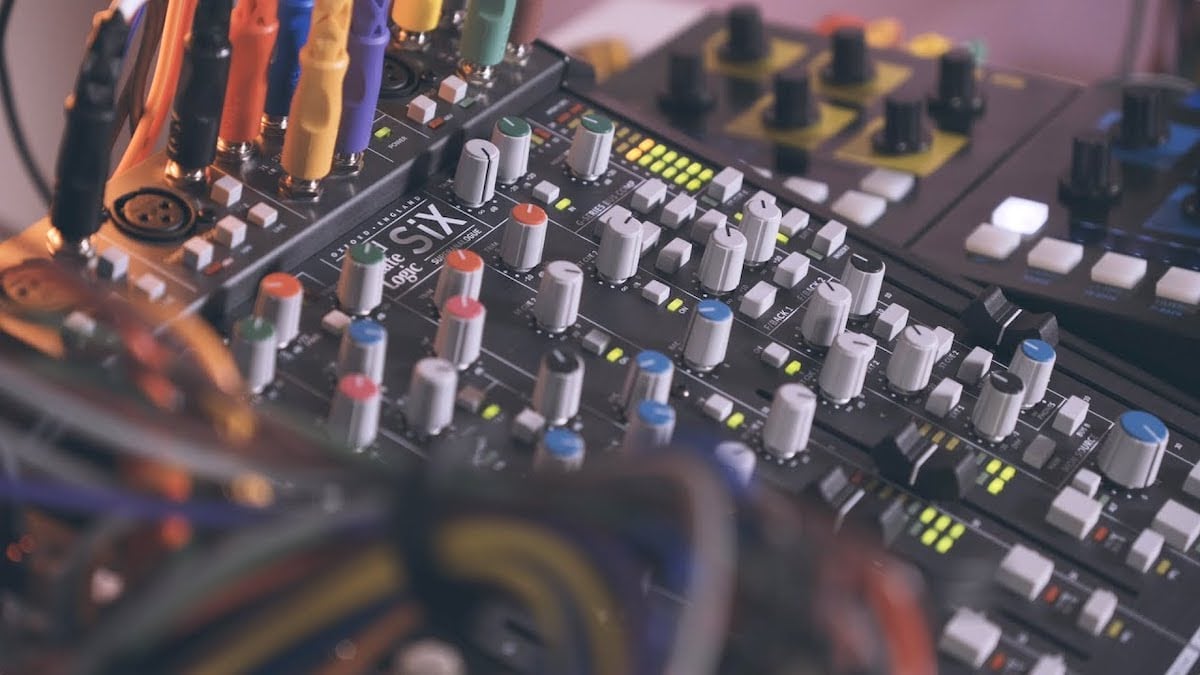
[Above: still frame from an excellent video in which modular artist Lightbath performs with Eurorack modular and SSL SiX]
Another option that gives you greater flexibility is to use an outboard studio mixer. This is especially good if you run Eurorack alongside other synthesizers, outboard effects, or pedals. You could bring your Eurorack in as a stereo channel or individual channels, depending on your configuration. Then you have the freedom to mix, pan and EQ your modular alongside other hardware synths or even the output of your computer. It all depends on how you want to handle your audio and whether you prefer the save/recall ability of mixing in your DAW or the live excitement of mixing a performance in hardware. The SSL BiG SiX is a great example of a high-quality desktop mixer with lots of stereo channels for synths and a solid mixing experience.
Sync and Sequencing
Recording your Eurorack as an instrument is all very well, but what about if you want to run it from your DAW? This is actually relatively easy to do because tools exist that can translate between MIDI and Control Voltage. You can also tackle it using purely CV between a computer and your modular, but to do so requires particular software, an audio interface with specialized features and a lot of messing about. It's an exciting and creative proposition but would need an article all of its own. So, for ease and efficiency, we're going to focus on how to send notes and controller information from your DAW to your Eurorack and keep it all in sync.
It's helpful to remember that MIDI was invented to fill in all the holes and inconveniences that came with analogue synthesizers. So you shouldn't expect analogue modular synths to work like a MIDI synth. However, the basics such as pitch, gate on/off, and a controller command such as velocity or mod wheel changes, can be sent from your computer to the modular. The key is a MIDI-to-CV converter module.
The Hexinverter Mutant Brain MIDI-to-CV Converter from Hexinverter is a solid example of what we're talking about. Create a MIDI track in your DAW, route it to a physical MIDI Out and connect that to the Mutant Brain. The module will convert up to 4 notes of polyphony and 12 gates into control voltage for running your modular synth. MIDI Clock can also be converted into an analogue pulse if you want other modules to keep to a clock. Of course, there are plenty of other MIDI to CV modules out there—each with a slightly different set of features.
Get Connected
Eurorack is enormously fun to play with on its own, but it can also integrate into a wider setup with the right tools and an open-minded approach. It's a lot more work than loading a plugin, but the rewards are huge. I would be so bold as to suggest having your workflow disrupted by modular can be the source of tremendous creativity.

